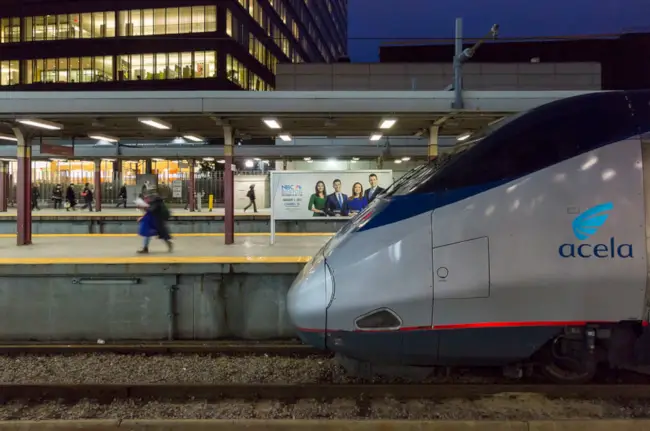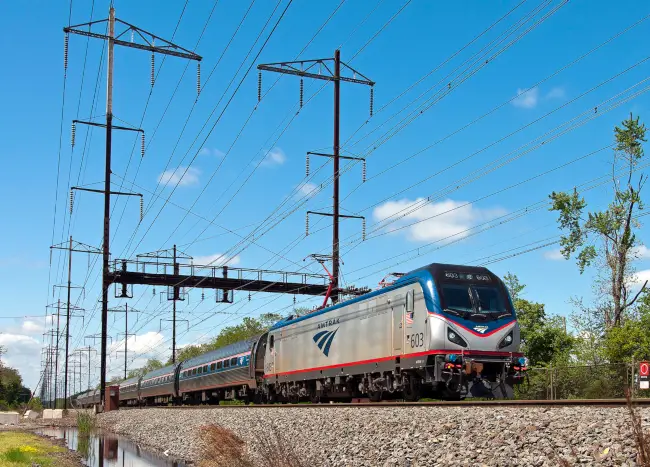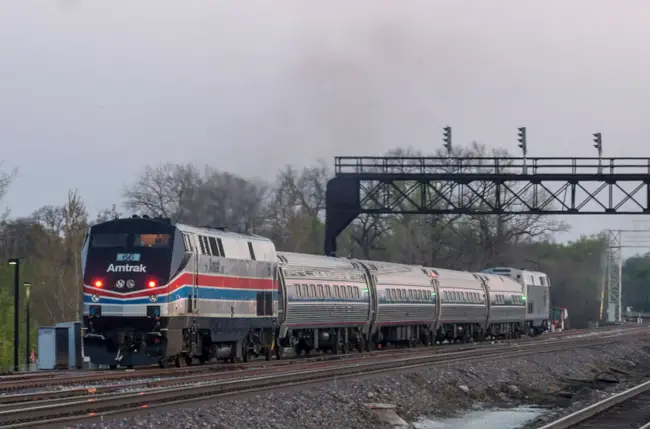Nowadays, wherever we are traveling, our smart phones, tablets, and computers come along for the ride. Therefore, many often wonder if the mode of transport they’re utilizing has WiFi, and train travel is no exception.
So, does Amtrak have WiFi? Yes. Amtrak provides WiFi on many of its trains and stations. It’s free and easy to use, be careful, however, as not all of Amtrak’s routes provide WiFi, and there are various limitations set forth to conserve bandwidth.
Although Amtrak provides WiFi for its customers, there are various limitations concerning usage, availability, and connectivity. Prior to boarding your train, it is important to know the limitations and usability of the WiFi service.
Since 1971, Amtrak has been the sole provider of intercity and long distance rail service throughout the nation. In the mid-2010s, to compete with other modes of transport, such as airlines and bus services, WiFi has been installed on various intercity and long distance trains throughout its network. Although it is not available on all their routes, Amtrak continues to expand, as they have already provided the service to 85% of their customers. Introducing AmtrakConnect has improved convenience for riders, especially those who prefer to be productive while traveling.

AmtrakConnect
AmtrakConnect, the name Amtrak gives its WiFi network, is available on over thirty routes, and a dozen stations nationwide. Amtrak receives their WiFi from various wireless network towers throughout its routes, which results in limited bandwidth, and slower connection than most have become accustomed. The network often lags and can be spotty at times, due to the moving train, and moving between vastly different carrier towers.
Oftentimes, when customers lose connection, it can take several minutes to reconnect to the server. Furthermore, even when the network is operating at its peak, it continues to lag, making anything more than general web surfing close to impossible.
Amtrak advises that customers download large files prior to boarding their trains, and only utilize the WiFi for web browsing, and refrain from streaming music and video out of courtesy of other passengers. Amtrak categorizes large files as those over 10MB, as downloads of this size could take hours to complete.

Amtrak WiFi is easily compared to WiFi on college campuses, coffee shops, and other public venues, where there are multiple users logging on, utilizing copious amounts of bandwidth.
Many passengers ask about the utilization of a Virtual Private Network (VPN), however, this is only available on select routes, such as the Acela, Capitol and San Jouquin Corridors, and the Pacific Surfliner.
On routes that do not provide WiFi service, customers could connect to other WiFi networks at various station stops throughout the route, primarily on long distance trains. However, Amtrak highly recommends that the customer consults their mobile provider for insight on how to connect to the service, and to avoid any possible unwanted fees.
Is the Amtrak network secure?
No, the Amtrak network is a public network, and Amtrak states that the customer is responsible for any virus, malware, or other infections that an electronic device may attract. Because the WiFi is not secure, it is recommended that customers refrain from making purchases or entering sensitive information while utilizing the network.
How to connect to the WiFi
On their website, Amtrak explains how to connect your device to AmtrakConnect. Connecting to Amtrak WiFi is relatively simple, as it is similar to connecting to WiFi in any other setting. Because the WiFi on Amtrak is public and unsecured, there is no need to enter a password.
If your device does not automatically connect to the network, follow these steps:
Step 1: Look in your list of available wireless networks for Amtrak_WiFi
Step 2: Select the network name.
Step 3: Open or refresh your browser; you should see the Amtrak WiFi welcome screen at this point.
Step 4: Agree to the terms of use and you will be taken to the Amtrak WiFi landing page. You are now connected to the Internet.

What routes offer AmtrakConnect WiFi?
WiFi is available on most intercity routes, including all Northeast Corridor trains, and some long distance routes. While a vast amount of eastern long distance routes include WiFi capability, most long distance routes west of Chicago lack WiFi. Furthermore, Amtrak’s various intercity routes in California have WiFi accessibility, such as the San Joaquin and Capitol Corridors, and the Surfliner route. Furthermore, trains traveling across the border into Canada lack WiFi once they leave the United States, as Amtrak does not have a contract with Canadian carriers.
Many major Amtrak stations include WiFi, as many of the busiest stations on the Northeast Corridor have this amenity, including the rail hub of Chicago’s Union Station. Similar to the routes listed above, customers will not find an Amtrak station west of Chicago with WiFi availability. Below is a concise list of the routes and stations that have WiFi connectivity.
Routes with WiFi
| Acela | Carolinian | Keystone | Pennsylvanian |
| Adirondack (U.S. Only) | Crescent | Lake Shore Limited | Pere Marquette |
| Cascades | Downeaster | Lincoln Service | San Joaquins |
| Hartford Line | Empire Service | Maple Leaf(U.S. Only) | Silver Meteor |
| Auto Train | Ethan Allen Express | Missouri River Runner | Silver Star |
| Blue Water | Hiawatha Service | Northeast Regional | Valley Flyer |
| Capitol Corridor | Illini/Saluki | Pacific Surfliner | Vermonter |
| Cardinal | Illinois Zephyr/Carl Sandburg | Palmetto | Wolverine |
Stations With WiFi
| Baltimore, MD- Penn Station | Sanford Auto Train |
| Boston South Station | Union Station-Washington D.C. |
| Chicago Union Station | Westwood, Massachusetts |
| Lorton Auto Train | Wilmington, Delaware |
| Moynihan Station-New York, NY | |
| New York Penn Station | |
| Philadelphia 30th Street Station | |
| Providence, Rhode Island |
For further information on WiFi capability, or other questions about riding Amtrak trains, visit their website for more information.
